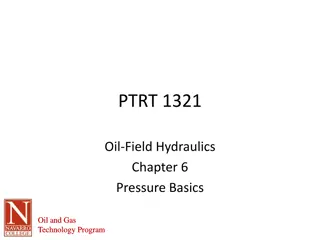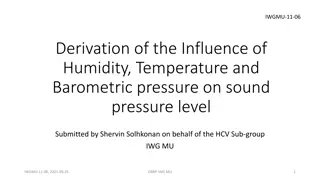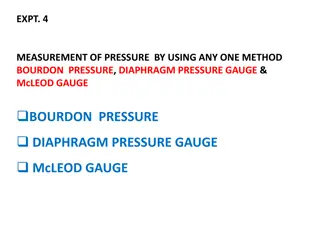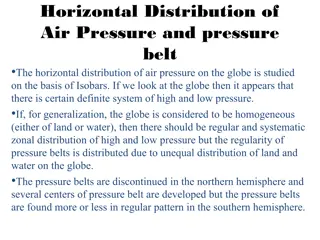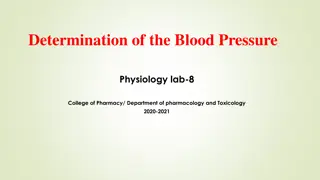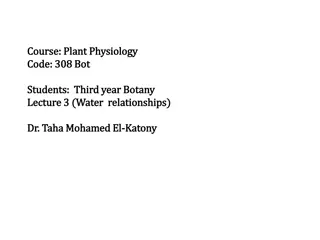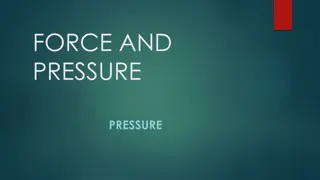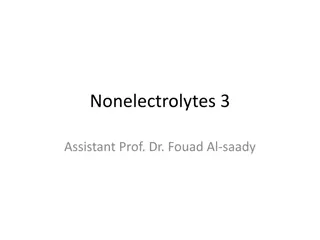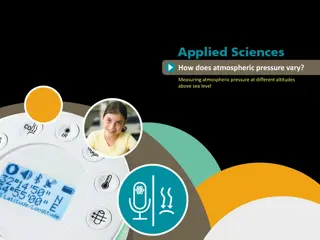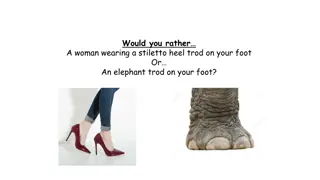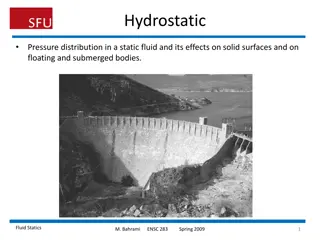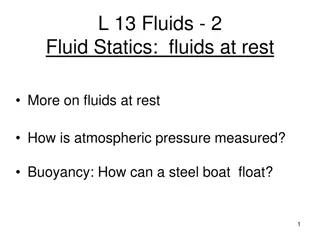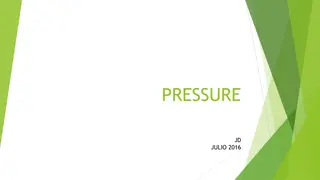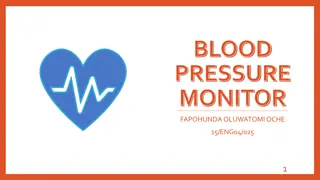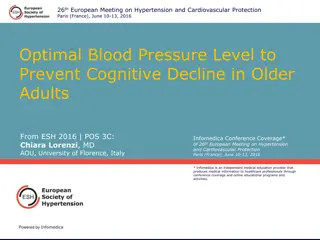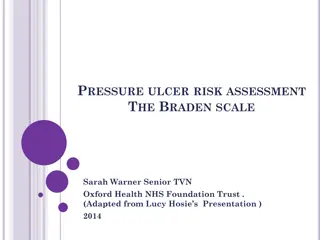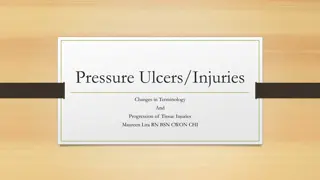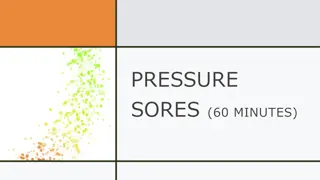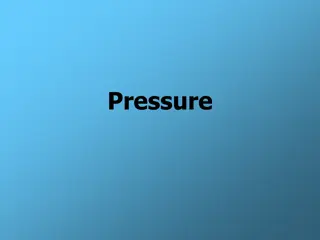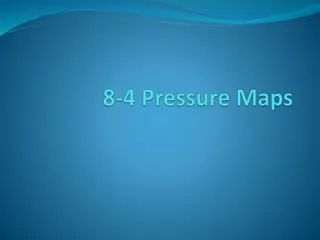Protecting Your Company from Over-Pressure Events
The causes and consequences of an over-pressure event in a company's gas system, along with recommendations for prevention and response strategies. Learn from a real incident and NTSB findings to improve safety measures.
Download Presentation

Please find below an Image/Link to download the presentation.
The content on the website is provided AS IS for your information and personal use only. It may not be sold, licensed, or shared on other websites without obtaining consent from the author.If you encounter any issues during the download, it is possible that the publisher has removed the file from their server.
You are allowed to download the files provided on this website for personal or commercial use, subject to the condition that they are used lawfully. All files are the property of their respective owners.
The content on the website is provided AS IS for your information and personal use only. It may not be sold, licensed, or shared on other websites without obtaining consent from the author.
E N D
Presentation Transcript
ARTICLE 21 PROTECTION OF LIFE AND PERSONAL LIBERTY. Tejaswi Sade 3rdYear, DSNLU, Visakhapatnam.
CONTENTS Introduction Article 21 andAmbit ofArticle 21 Historic Judgments Right to Life Right to Livelihood Right to Privacy Right to Education Right Against Sexual Harassment Prison Reforms Right to Clean Environment A.K. Gopalan Case Maneka Gandhi Case. ARTICLE 21 2
INTRODUCTION TO ARTICLE - 21 The right to life and personal liberty is one of the most coveted and crucial fundamental human rights, revolving about where all other individual rights revolve. By applying the concept of judicial activism, the Indian judiciary has evolved in many ways as a saviour of mankind, and has interpreted Article 21 in a very effective and progressive manner, including the rights to education, the environment, privacy, euthanasia, legal aid, and compensation under Article 21 in various landmark judgements. This right has long been regarded as the Constitution's heart, the most organic and progressive clause in our living constitution, and the bedrock of our laws. Article 21 can only be invoked when a person's "life" or "personal liberty" is taken away by the "State," as defined in Article 12. Private Individuals' violations of the right are not covered under Article 21. ARTICLE - 21 3
ARTICLE - 21 Article 21 of the Indian Constitution is incorporated under the Part III of the Fundamental Rights in our Indian Constitution. It states that, no person shall be deprived of his life or personal liberty except according to the Procedure Established by Law . It Fundamentally secures two Rights. They are: Right to Life, and Right to Personal Liberty. It was a Fundamental Right, that was available to citizens as well as non-citizens. According to Justice Bhagwati, Article 21 embodies a constitutional value of supreme importance in a democratic society . Iyer, J., has characterized Article 21 as the procedural magna carta protective of life and liberty. It cannot be suspended during any emergency. Article 21 doesn t mean mere animal existence, it actually guarantees the right to a dignified life. Article 21 corresponds to the Magna Carta of 1215, the Fifth Amendment to the American Constitution, Article 40(4) of the Constitution of Ireland 1937, and Article XXXI of the Constitution of Japan, 1946. ARTICLE 21 4
RIGHTS INCLUDED IN THE AMBIT OF ARTICLE 21 Right against inhumane Treatment Right to Livelihood Right to Social Security and Protection of Right to Privacy the Family Right to Education Right against Solitary Confinement Right to Information Right to sleep Right to speedy and fair trial Right of Women to be treated with decency Right to Live with Human Dignity and dignity Right to Emergency Medical Aid Right to Hearing Right to Reputation Right to protect the convicted and accused person. Right to Electricity Right against Handcuffing Right to Free Legal Aid ARTICLE 21 5
HISTORIC JUDGEMENTS RELATED TO ARTICLE 21 A.K.Gopalan v. State of Madras, AIR 1950 SC 27. Maneka Gandhi v. Union of India, AIR 1978 SC 597. Kharak Singh v. The State of UP and Ors. , 1963 AIR 1295. Sunil Batra v. Delhi Administration, 1980 AIR 1579. Mohini Jain v. State of Karnataka, 1992 AIR 1858. Unni Krishnan v. State of Andhra Pradesh, 1993 AIR 2178. Olga Tellis V. Bombay Municipal Corporation, 1985 SCC (3) 545. Vishaka and Ors. v. State of Rajasthan, AIR 1997 SC 3011. Shantisar Builder v. Narayan Khimal Totame AIR 1990 SC 630 Parmanand Katara V Union of India, 1989 AIR 2039. ADM, Jabalpur VS Shivkant Shukla, 1976 AIR 1207. Bandhua Mukti Morcha VS Union of India, 1984 AIR 802. ARTICLE 21 6
MEANING AND CONCEPT OF RIGHT TO LIFE Everyone has the right to life, liberty and security. It does not connote mere animal existence or continued drudgery through life. Only Article in the Constitution that has received the widest possible interpretation. Munn v. Illinois, 1877 The Honorable Court referred to the observation of Justice Field, wherein, He states that by the term life here, used something more that a mere animal existence. It thus, embraced within itself not only the physical existence but also the quality of life. Francis Coralie v. Union Territory of Delhi,1981 AIR 746,observed that: The right to live includes the right to live with human dignity and all that goes along with it, viz., the bare necessities of life such as adequate nutrition, clothing and shelter over the head and facilities for reading writing and expressing oneself in diverse forms, freely moving about and mixing and mingling with fellow human beings and must include the right to basic necessities the basic necessities of life and also the right to carry on functions and activities as constitute the bare minimum expression of human self. ARTICLE 21 7
RIGHT TO LIVELIHOOD Olga Tellis V. Bombay Municipal Corporation - AIR (1986) SC 180. The right to livelihood is borne out of the right to life, as no person can live without the means of living, that is, the means of livelihood. If the right to livelihood is not treated as a part and parcel of the constitutional right to life, the easiest way of depriving a person of his right to life would be deprived him of means of livelihood to the point of abrogation. RIGHT TO SHELTER Shantisar Builders v. Narayan Khimal Totame AIR (1990) SC 630. In any civilised community, the right to life is guaranteed, according to the Supreme Court. The right to food, the right to clothing, the right to a decent environment, and the right to appropriate living quarters would all be included. The distinction between an animal's and a human's need for shelter must be considered. It is the bare protection of the body for an animal; for a human being, it must be a suitable accommodation that allows him to grow in all aspects-physical, mental, and intellectual. ARTICLE 21 8
RIGHT TO PRIVACY Mr. X v. Hospital Z AIR (1999) SC 495. The Supreme Court explained that Article 21 of the Constitution entitles a person to lead a healthy life and therefore the women who was to marry a person was entitled to know whether her prospective husband has any deadly and communicable disease. Registered Society v. Union of India AIR (1996). The Supreme Court had given directions to Subordinate Courts to dispose of long pending cases. Criminal cases was quite consistent with the spirit underlying Part III of the Constitution, Telephone tapping was held to be violation of right to privacy The Supreme Court's 9-judge constitutional bench has ruled in Justice K.S. Puttuswamy (Retd.) vs. Union of India and Others that privacy is a basic right under the Indian Constitution. The Privacy Bench unanimously decided that the right to privacy is a constitutionally recognised fundamental right. According to a combined order: Article 21 and as part of Part III of the Constitution's protection of liberties; And The Supreme Court's earlier rulings in Kharak Singh and MP Sharma, to the degree that they held otherwise, are reversed. ARTICLE 21 9
RIGHT TO EDUCATION The Constitution (Eighty-sixth Amendment) Act, 2002 introduced Article 21- A into the Indian Constitution, making it a Fundamental Right to offer free and compulsory education to all children aged six to fourteen years in such a manner as the State may specify by legislation. The Right of Children to Free and Compulsory Education (RTE) Act of 2009, which implements Article 21-A, states that every child has the right to a full- time elementary education of adequate and equitable quality in a formal school that meets certain key norms and requirements. On April 1, 2010, Article 21-A and the RTE Act went into effect. The terms "free and compulsory" appear in the title of the RTE Act, Free education' means that no child, except a child who has been admitted by his or her parents to a school that is not supported by the appropriate Government, is liable to pay any fee, charge,or expense that may prevent him or her from pursuing and completing elementary education. Mohini Jain v. State of Karnataka, (1992) AIR 1858. The right to education stems immediately from the right to life, and the state is under a constitutional responsibility to offer academic institutions at all levels for the benefit of the citizens, as the right to education is concurrent to the fundamental right. Unni Krishnan v. State of Andhra Pradesh, (1993) SCR (1) 594. Supreme Court has fixed the age that Right to Education is a Fundamental Right guaranteed to the children for the age of 6-14 years. ARTICLE 21 10
RIGHT AGAINST SEXUAL HARASSMENT Vishaka v. State of Rajasthan AIR (1997) SC 3011. The SC has declared sexual harassment of a working woman at her place of work as amounting to violation of rights of gender equality and right to life and liberty which is clear violation of Article 14,15 and 21. RIGHT TO SPEEDY TRIAL Hussainara Khatoon v. Home Secretary, State of Bihar, (1979) AIR 1369. It was brought to the Supreme Court's attention in this case, an alarming number of men, women, and children were held in prisons for years awaiting prosecution in courts of law. The Court took serious note of the issue, observing that it was a disgrace to the court system that men and women could be imprisoned for such extended lengths of time without being tried. The Court ruled that keeping under-trial detainees in jail for longer than they would have been imprisoned if convicted was unconstitutional and in breach of Article 21. As a result, the court ordered his release from custody. ARTICLE 21 11
RIGHTS OF PRISONERS AND RIGHT AGAINST ILLEGAL DETENTION Sunil Batra v. Delhi Administration, (1980) AIR 1579. Those who have been convicted of any crime can likewise benefit from Article 21 protection. Despite the fact that he has been stripped of his other rights, he is nonetheless entitled to the rights granted by Article 21. Sunil Batra vs. Delhi Administration involved a petitioner who was sentenced to death on accusations of murder and robbery and had been confined in solitary confinement since his conviction by the session court, pending his appeal to the High Court. The petitioner filed a writ petition in the Supreme Court, claiming that solitary confinement is a substantive penalty under IPC, 1860, and that only the courts, not the jail administration, have the right to impose such penalties, thereby violating Article 21. The Supreme Court agreed with his arguments, ruling that a person's conviction for a crime does not make him a non-person subject to a substantial punishment imposed by jail officials without appropriate procedural safeguards, thereby violating Article 21. D.K. Basu vs. State of West Bengal, 1996. petitioner submitted a letter to the Chief Justice, directing his attention to specific news articles about deaths in police lockups and detention published in the Telegraph and the Indian Express, and the Court recognised the letter as a writ petition. The court not only issued the rules, but also went so far as to say that any failure by the officials to follow them would result in not only departmental punishment, but also contempt of court. ARTICLE 21 12
RIGHT TO CLEAN ENVIRONMENT M.C.Mehta v. Union of India, (1987) SCR (1) 819. The case's outcome was essential for future environmental legal challenges, as it resulted in a number of critical stances that are still honoured today. The Supreme Court took a proactive role in the case's resolution, ensuring that people's fundamental rights were not violated by expanding the meaning of Article 21's Right to Life. It was critical for the Court to address the issues raised following the Bhopal Gas tragedy judgement, which was handed down only a year ago, in order to restore the country's faith in the legal system. It was felt that such a robust ruling was required to assure the public that industries would be held fully accountable for their actions. It was deemed important to issue such a harsh ruling in order to assure the public that industries will be held fully accountable for their conduct and punished for endangering community life. ARTICLE 21 13
A.K.GOPALAN VS. STATE OF MADRAS In this case, two main issues regarding Art. 21 were resolved. The arts 19, 21, and 22 are mutually exclusive and distinct from one another. A legislation touching a person's life or personal liberty could not be declared. It was declared unlawful because it lacked natural justice and due process. Any procedure could be established by the legislature for this purpose. It gave final say to the legislature to determine what was going to be procedure to curtail the personal liberty of a person in a given situation and what procedural safeguards he would enjoy. The Supreme Court has taken a narrow interpretation of Article 21 in this case. It held that the protection under Article 21 is available only against arbitrary executive action and not from arbitrary legislative action. This means that the state can deprive a person of the Rights available in Article 21 based on a a law. ARTICLE 21 14
ADM, JABALPUR VS SHIVKANT SHUKLA (HABEAS CORPUS CASE) This case showed that 21 as interpreted in Gopalan could not play any role in proving any protection against any harsh law seeking to deprive a person of his life or personal liberty. After emergency, it was realized that power to order preventive detention was misused by the official machinery during the emergency. Art.359 of the constitution was amended by 44th Amendment- 44th amendment- Art.20 & 21 never be suspended even during emergency and other fundamental rights won't suspend automatically. Bandhua Mukti Morcha VS Union of India The Supreme Court expanded the horizon of Art. 21 and held that right to life includes right to live with human dignity, free from exploitation and to have equal opportunity. The judicial approach with time thus has led to two very important results Many Directive Principles which, as such, are not enforceable have been activated and has become enforceable. The Supreme Court implied a number of fundamental rights from Art. 21 ARTICLE 21 15
MANEKA GANDHI V. UNION OF INDIA Menka Gandhi's passport was impounded by the Central Government under Passport Act in the interest of general public. Challenged on the ground that the order impounding the passport was null and void as it had been made without giving an opportunity of being heard in her defense. The Court reiterated the proposition that Art. 14, 19, and 21 are NOT mutually exclusive. This means that a law prescribing a procedure for depriving a person of 'personal liberty' has to meet the requirement of Art. 19, Art 21 (Procedure established by law) and Art. 14 of the Constitution of In India. Maneka Gandhi case completely overrides the Gopalan's view which had held the field for nearly three decades. In this case , the honorable Supreme Court overruled its judgement of the A.K.Gopalan Case by taking a wider interpretation of Article 21. It also ruled that the Right to life and personal liberty of a person can be deprived by law on the condition that the procedure prescribed by that law is reasonable, fair, and just. Further, it clarified that the right to life does not merely mean animal existence. It held that all those aspects of life which go to make a man s life meaningful, complete, and worth living will be included in this. ARTICLE 21 16
CONCLUSION This is the basic overview of Article 21 of the Indian Constitution. This article weaves a string of an endless yarn of welfare legislation. Its scope and interpretation has been time and again defined and redefined, giving widest possible amplitude. 20XX PRESENTATION TITLE 17
THANK YOU! TEJASWI SADE sadetejaswi@dsnlu.ac.in 3rd Year, Damodaram Sanjivayya National Law University, Visakhapatnam ARTICLE 21 18


